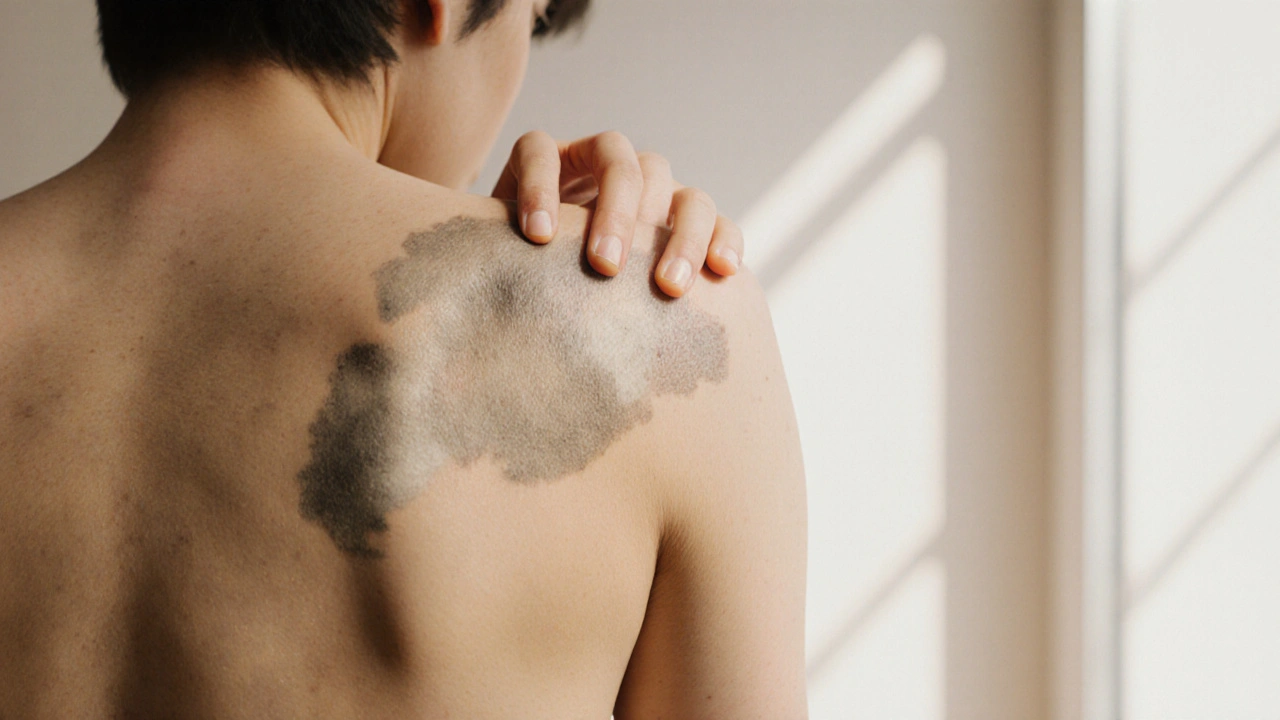Selenium Sulfide: Uses, Benefits, and Alternatives
When working with selenium sulfide, a selenium‑based compound formulated in medicated shampoos to fight fungal scalp conditions. Also known as Selsun Blue, it helps clear persistent dandruff and related flare‑ups. Another common scalp issue it tackles is seborrheic dermatitis, a chronic inflammatory skin condition that causes flaky, oily scales on the scalp, while ketoconazole, an imidazole‑based antifungal found in prescription shampoos serves as a frequent alternative.
How Selenium Sulfide Works
Selenium sulfide acts by slowing the growth of Malassezia yeast, the primary culprit behind dandruff and seborrheic dermatitis. It reduces the production of inflammatory metabolites, which lessens redness and itching. The compound also slows skin cell turnover, preventing the buildup of oily scales that cause visible flakes. Because it targets yeast rather than bacteria, it’s especially effective for scalp conditions that don’t respond to regular anti‑seborrheic soaps.
Typical usage involves applying the shampoo to wet hair, massaging into the scalp, leaving it on for 5‑10 minutes, then rinsing thoroughly. Most dermatologists recommend 2–3 times per week during flare‑ups, then tapering to once‑weekly maintenance. Over‑use can dry the scalp, so alternating with a gentle conditioner is advised.
Benefits and Safety Profile
The main advantage of selenium sulfide is its dual action: it reduces both the fungus and the excess skin shedding that cause flakes. Users report faster relief compared with zinc pyrithione or coal tar, especially for stubborn cases. Side effects are generally mild—occasional scalp irritation, a temporary change in hair color, or a slight metallic taste if the product contacts the mouth. Pregnant or nursing individuals should consult a doctor before starting regular use.
Because selenium is a trace element, systemic absorption from shampoo use is minimal. Studies show serum selenium levels remain well within normal ranges even with daily application. Nonetheless, it’s wise to avoid using the product on broken skin or open wounds.
Top Alternatives Compared
When selenium sulfide isn’t suitable, several other agents step in. Zinc pyrithione, a zinc‑based antifungal that also reduces bacterial colonization is popular for everyday anti‑dandruff shampoos because it’s gentle and suitable for daily use. Coal tar, a thick, dark liquid that slows skin cell production works well for severe seborrheic dermatitis but can stain clothing and has a strong odor. Salicylic acid, a keratolytic that helps shed dead skin cells is useful for flaky scalp but may cause dryness if not paired with moisturizers. Each alternative offers a different balance of efficacy, tolerance, and convenience, allowing clinicians to tailor treatment to the patient’s needs.
Beyond scalp care, the articles in this collection cover a wide range of medication topics—from buying cheap generic gabapentin online to comparing ketoconazole cream with other antifungal options. Whether you’re looking for pricing guides, safety tips, or in‑depth drug comparisons, the posts below provide practical, up‑to‑date information that can help you make informed decisions about your health.
Ready to explore the full list? Dive into the detailed guides and see how each medication stacks up against the competition, including the role selenium sulfide plays in the broader world of dermatology and antifungal therapy.
How Effective Are Antifungal Medications for Tinea Versicolor?
Learn how well antifungal medications work against tinea versicolor, compare topical and oral options, and discover tips to keep the condition from returning.
View More
